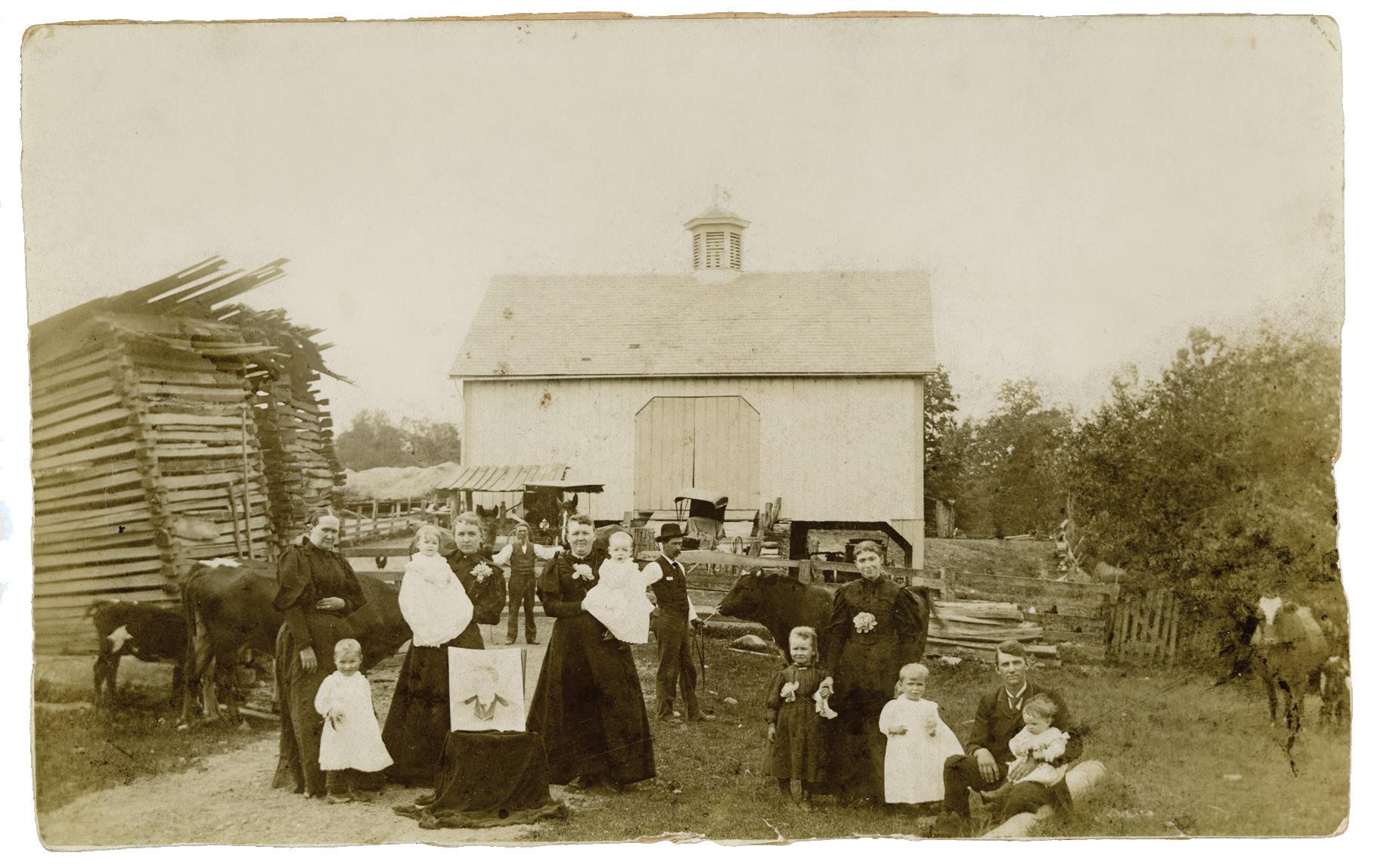
4 minute read
CO-OP NEWS
CONTACT US Office: 812-246-3316 / 800-462-6988 Outages: 866-480-REMC Fax: 812-246-3947 To pay your bill by phone or inquire about your account: 877-484-4042
EMAIL info@clarkremc.coop
WEBSITE ClarkREMC.coop
OFFICE HOURS 7 a.m.-4 p.m., Monday-Friday
STREET ADDRESS 7810 State Road 60 Sellersburg, IN 47172
MAILING ADDRESS P.O. Box 411, Sellersburg, IN 47172
BOARD OF DIRECTORS Paul Graf, President John Biesel, Vice President Jeff Myers, Secretary/Treasurer Joe Basham Steve Dieterlen Mark Huber Amberley Kendall
UPCOMING BOARD MEETINGS Sept. 6 at 5:30 p.m. Oct. 4 at 5:30 p.m. Nov. 1 at 5:30 p.m.
EMPLOYEE ANNIVERSARIES Shelbi Ball - 4 years Mark Guernsey - 42 years Presley Harbin - 4 years Neil Hopwood - 34 years Eric Melton - 6 years Kevin Moore - 20 years Alex Olson - 2 years Kevin Porter - 11 years Bo Simpson - 11 years
Like us on Facebook:
facebook.com/ ClarkCountyREMC
Follow us on Twitter
twitter.com/ClarkCountyREMC
Follow us on Instagram
instagram.com/ClarkCoREMC
Follow us on LinkedIn
linkedin.com/company/clarkcounty-remc
INTRODUCING OUR NEW ELECTRIC VEHICLE (EV) RATE
day to the next. Gas prices have been all over the place this year. We saw record highs in June, and prices seemed to jump from one
But imagine this scenario: What if you could save money on gas for your vehicle just by filling up your tank at a different time of the day? If it was more expensive to buy gas on the way to/from work than it was later in the evening, would you wait to fill up? It might sound crazy, but that’s the idea behind our new electric vehicle (EV) rate. Let me explain.
Most of our members pay the same price for each kilowatthour (kWh) of electricity they consume, no matter when they use the electricity. But in reality, the cost to generate electricity fluctuates all the time. Our EV rate has higher prices when electricity is most expensive (summer weekdays from 3-9 p.m. and winter weekdays from 7-10 a.m. and 6-9 p.m.), and lower prices when electricity is cheaper (spring, fall, and all weekends and holidays).
But it gets even better! The cheapest time to generate electricity is in the middle of the night, so our EV rate is only about half the normal cost of electricity between 11 p.m. and 5 a.m. all year long. EV owners know that’s the perfect time to charge their vehicles, so the savings can really add up.
We understand that electric vehicles don’t make sense for everyone or every situation. But if you’re interested in paying less for electricity more than 90% of the year, or if you just want to learn more about how this works, check out page 6 or give us a call.
JASON CLEMMONS
CEO
MEMBER MOVIE NIGHT
FRIDAY, OCT. 21
Doors open at 6 p.m. Movie starts at 7 p.m.
MOVIE:
Hotel Translyvania
ROSS THEATER
31 E. Wardell St. Scottsburg, IN 47170
FREE ADMISSION
for the first 100 attendees
Keep food safe when
the power goes out
By Abby Berry
Severe winds, lightning and even squirrels can temporarily cause the power to go out. We understand power outages of any length can be frustrating, especially when your fridge is stocked with perishable foods.
Extended power outages are rare, but when they occur, it’s important to understand food safety measures to take to avoid illness.
Here are a few food safety tips to keep in mind before, during and after a power outage.
Before an outage
A good rule of thumb is to keep an emergency supply kit on hand. Be sure to include nonperishable food items like bottled water, powdered milk, canned goods, cereal and protein bars in your emergency kit.
If you have advance warning that an outage is possible, fill a cooler with ice –– just in case the outage spans several hours. Having a cooler ready to go can buy extra time for your refrigerated, perishable items.
During an outage
If an outage occurs, do not open the refrigerator or freezer unless absolutely necessary. An unopened refrigerator will keep food cold for about four hours. A half-full freezer will keep food frozen for about 24 hours and a full freezer for about 48 hours. If it looks like the power outage will last longer than four hours, move your important perishable items to an icefilled cooler.
After an outage
If refrigerated foods have been exposed to temperatures higher than 40 degrees for more than two hours, the American Red Cross recommends discarding the items. If any foods have an unusual color, odor or texture, they should be thrown away.
While most perishable foods should be thrown out after an extended outage, there are a few items that are safe to consume after a two-hour exposure to 40+ degrees: • hard cheeses that are properly wrapped • butter or margarine that is properly wrapped • taco, barbecue and soy sauces • peanut butter, jelly, mustard, ketchup and relish
The best way to avoid illness from spoiled food during or after an outage is to follow the four-hour rule of thumb. After an outage, always smell and inspect foods before consuming and remember: when in doubt, throw it out.
To learn more about food safety after an emergency, visit ready.gov/food
Abby Berry writes on consumer and cooperative affairs for the National Rural Electric Cooperative Association, the national trade association representing more than 900 local electric cooperatives. From growing suburbs to remote farming communities, electric co-ops serve as engines of economic development for 42 million Americans across 56% of the nation’s landscape.












